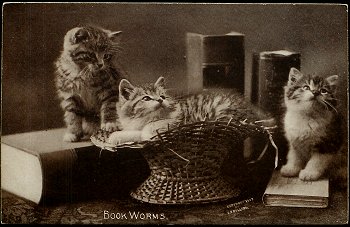 April 14, 1434: The foundation stone of Cathedral St. Peter and St. Paul in Nantes, France is laid. "The Cathédrale St-Pierre-St-Paul (Nantes Cathedral), in the region of Brittany, is one of France's last Gothic cathedrals, built well after most other medieval cathedrals had been completed. Begun in 1434, the cathedral wasn't finished until the end of the 19th century, but it remained amazingly architecturally harmonious. After a 1972 fire destroyed the roof, the interior was restored."
April 14, 1434: The foundation stone of Cathedral St. Peter and St. Paul in Nantes, France is laid. "The Cathédrale St-Pierre-St-Paul (Nantes Cathedral), in the region of Brittany, is one of France's last Gothic cathedrals, built well after most other medieval cathedrals had been completed. Begun in 1434, the cathedral wasn't finished until the end of the 19th century, but it remained amazingly architecturally harmonious. After a 1972 fire destroyed the roof, the interior was restored."
April 14, 1688: Paul de Lamerie, famous English silversmith and Rococo master, is baptized in Hertogenbosch, Holland. The best-known English silversmith of his generation, his Huguenot parents had left France following the Edict of Fontainebleau (1685). They initially settled in the United Provinces, where Paul was born, moving to London in 1691. de Lamerie is notable for working in the Rococo style from the 1730s. He opened his shop in 1712 and was appointed goldsmith to King George I in 1716.

April 14, 1894: Thomas Edison demonstrates the kinetoscope, a device for peep-show viewing using photographs that flip in sequence, a precursor to movies. "Though not a movie projector—it was designed for films to be viewed individually through the window of a cabinet housing its components—the Kinetoscope introduced the basic approach that would become the standard for all cinematic projection before the advent of video: it creates the illusion of movement by conveying a strip of perforated film bearing sequential images over a light source with a high-speed shutter.
Instrumental to the birth of American movie culture, the Kinetoscope also had a major impact in Europe; its influence abroad was magnified by Edison's decision not to seek international patents on the device, facilitating numerous imitations of and improvements on the technology. In 1895, Edison introduced the Kinetophone, which joined the Kinetoscope with a cylinder phonograph. Film projection, which Edison initially disdained as financially nonviable, soon superseded the Kinetoscope's individual exhibition model."
Instrumental to the birth of American movie culture, the Kinetoscope also had a major impact in Europe; its influence abroad was magnified by Edison's decision not to seek international patents on the device, facilitating numerous imitations of and improvements on the technology. In 1895, Edison introduced the Kinetophone, which joined the Kinetoscope with a cylinder phonograph. Film projection, which Edison initially disdained as financially nonviable, soon superseded the Kinetoscope's individual exhibition model."

April 14, 1868: Peter Behrens, German architect and designer for AEG, is born. "In 1907, AEG (Allgemeine Elektrizitäts-Gesellschaft -the German electric company) retained Behrens as artistic consultant. He designed the entire corporate identity (logotype, product design, publicity, etc.) and for that he is considered the first industrial designer in history. Peter Behrens was a pioneer in everything he did in the first half of the 20th century and his ideas were spread around the world by his students, especially by Walter Gropius, Mies van der Rohe and Le Corbusier."
IN THE NEWS-
 A taxi driver was given a doodle on a scrap of paper as an unusual tip, but as the customer was artist Damien Hirst it could be worth £5,000. Jon Horsley, 40, gave the drawing to his son LJ, who hopes to become a film-maker. The 15-year-old has decided to sell it to fund his ambition. Read the full story
A taxi driver was given a doodle on a scrap of paper as an unusual tip, but as the customer was artist Damien Hirst it could be worth £5,000. Jon Horsley, 40, gave the drawing to his son LJ, who hopes to become a film-maker. The 15-year-old has decided to sell it to fund his ambition. Read the full storyIN OUR STORE-
"1929 Foire de Paris -Universelle & Internationale Reconnue d'Utilite Publique -Catalogue Officiel"
Published in Paris in 1929.
The directory to the 1929 Fair of Paris, a grand assemblage of stores, manufacturers and services, held annually in its own grand multi-building exhibition hall. The Foire de Paris is still held in May, the 2009 edition hosting 2,700 exhibitors (which seems about what the 1929 edition had as well).
$50.00


No comments:
Post a Comment